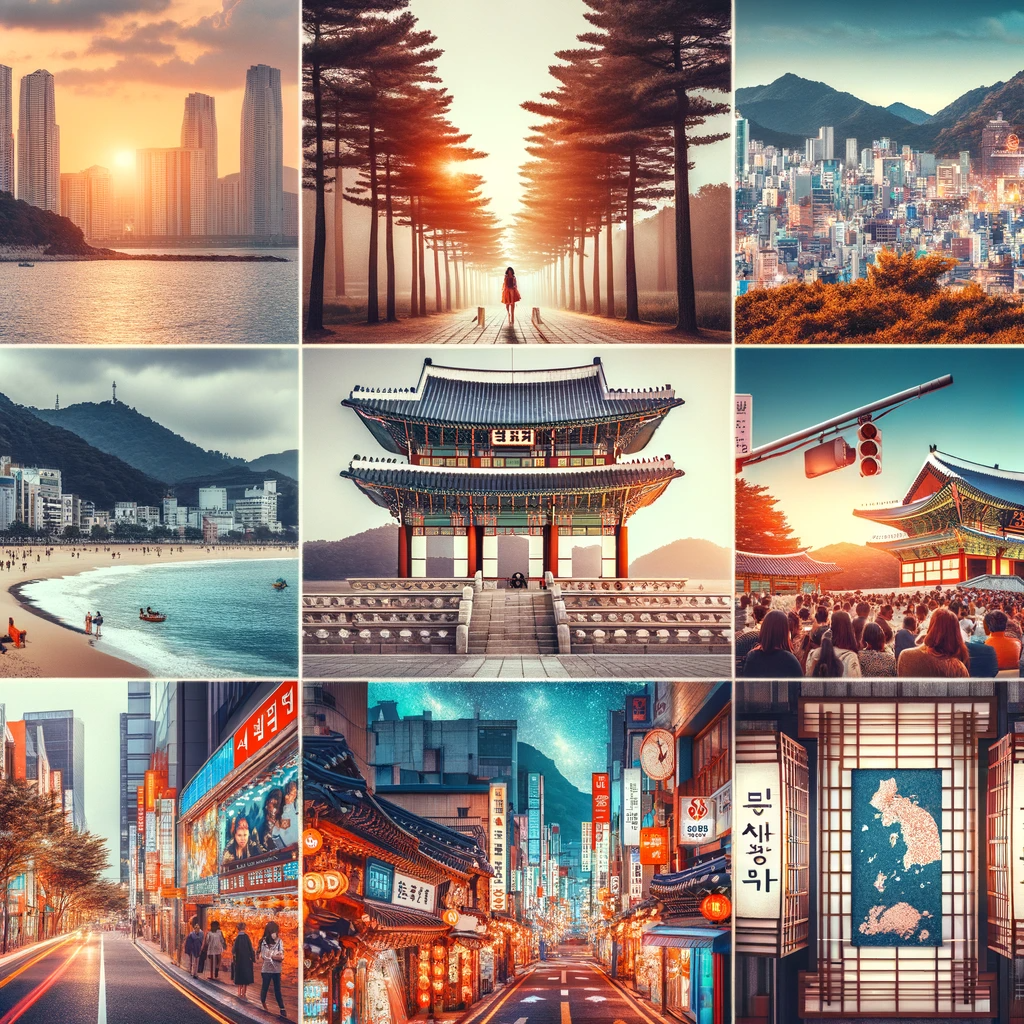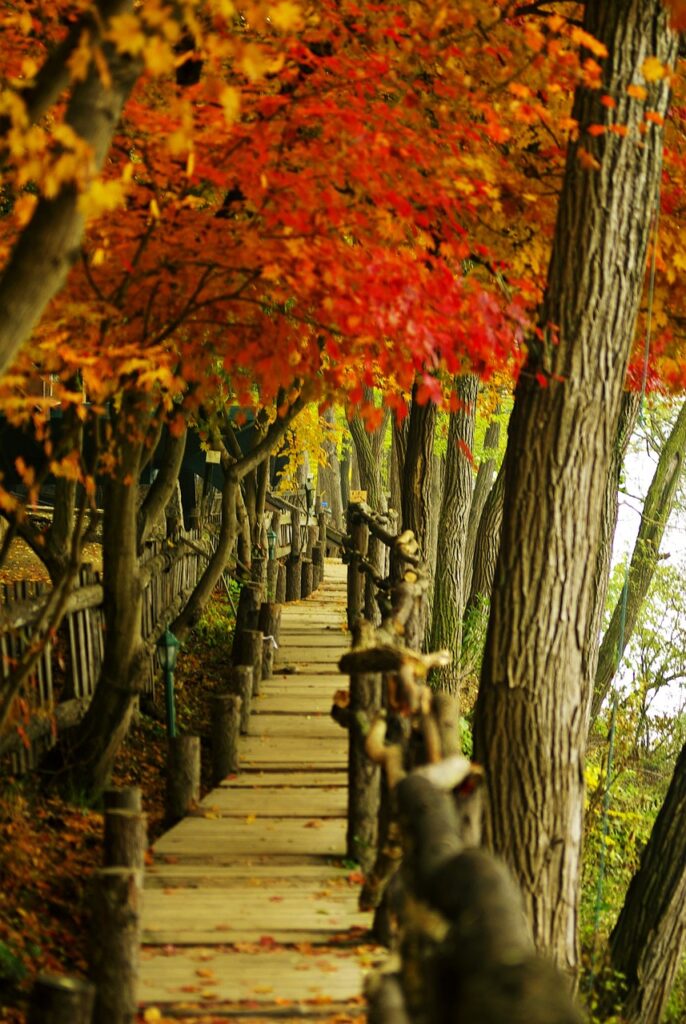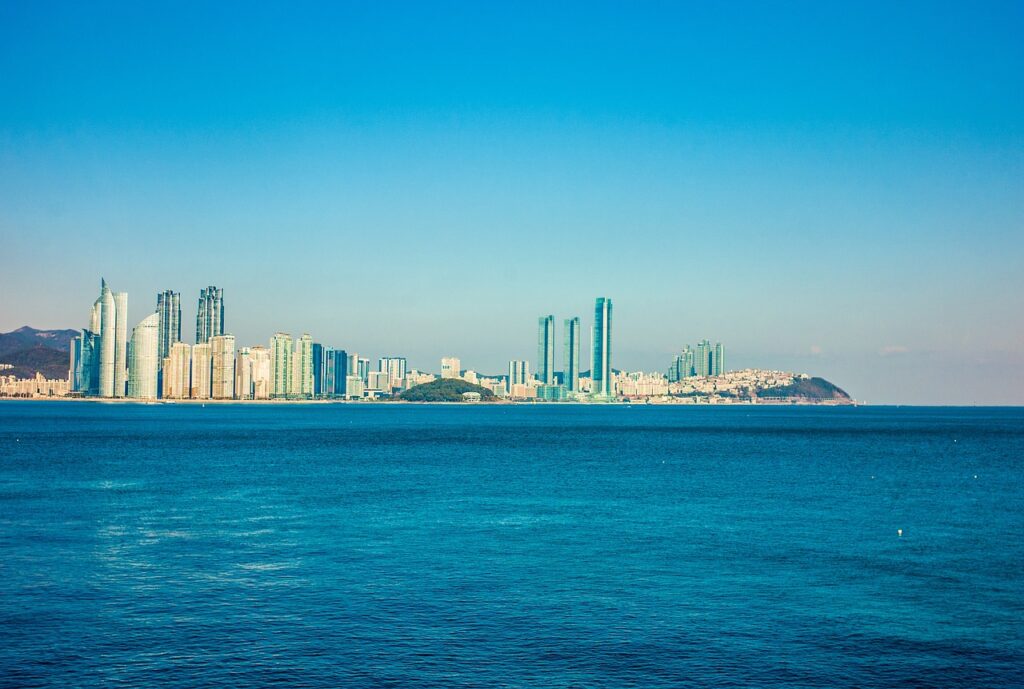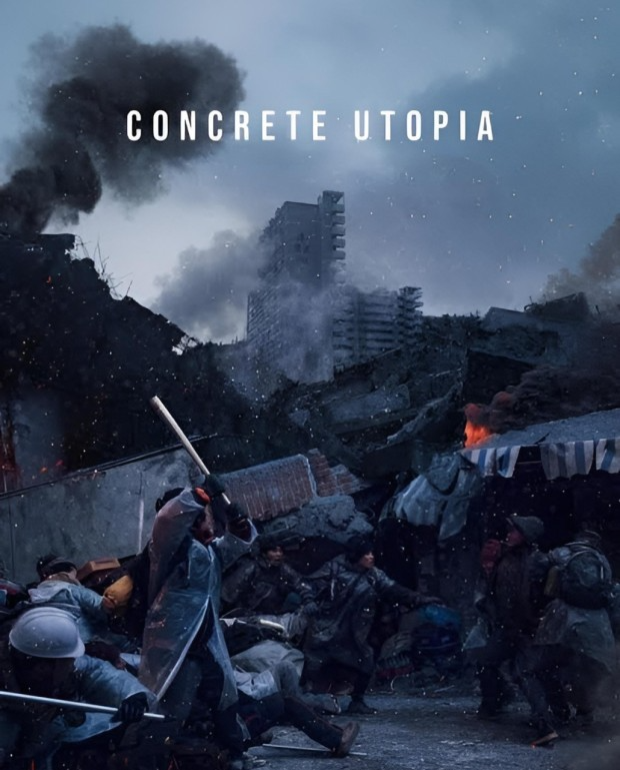Discover the charm of Korean Movie Tourism Spots, where the allure of cinema meets the vibrant culture of South Korea. In this blog post, we embark on a cinematic journey through some of the most iconic locations featured in Korean movies. From the picturesque settings that have captured the hearts of film enthusiasts to the cultural and historical significance embedded in these locales, we explore the multifaceted appeal of these destinations. Whether you’re a movie buff, a photography enthusiast, or simply a traveler in search of unique experiences, this guide will unveil the best of Korea’s movie tourism spots, offering practical tips, insightful behind-the-scenes looks, and the perfect blend of reality and on-screen magic.

Iconic Movie Locations in Korea
Korea, with its stunning landscapes and vibrant cities, has been the backdrop for many memorable movies. These iconic movie locations have not only captured the essence of Korean culture but also attracted tourists from around the world. Exploring these sites offers a unique blend of cinematic nostalgia and real-world beauty.
Nami Island – A Romantic Escape

Nami Island, known for its pictures que tree-lined roads, gained international fame from the Korean drama “Winter Sonata.” The island’s serene beauty makes it a perfect spot for fans seeking to recreate their favorite scenes. An image of the famous Metasequoia Lane, especially during autumn, would illustrate the island’s allure.
Busan’s Haeundae Beach – A Cinematic Coastline

Haeundae Beach, featured in movies like “Tidal Wave,” is renowned for its bustling summer vibe and panoramic ocean views. This urban beach epitomizes the dynamic spirit of Korean coastal cities. A panoramic shot of the beach during peak season would vividly capture its lively atmosphere.
Changdeokgung Palace – A Royal Setting
The historic Changdeokgung Palace, a UNESCO World Heritage site, has been the setting for numerous films depicting royal stories. Its well-preserved architecture and the secret garden are a testament to traditional Korean aesthetics. An image of the palace’s intricate designs would be fitting here.
Bukchon Hanok Village – Traditional Korea Alive
Bukchon Hanok Village, with its traditional Korean houses (hanoks), offers a glimpse into Korea’s rich history, as seen in films like “The Handmaiden.” A photo of the village’s narrow alleys lined with hanoks would add a cultural depth to the section.
Seoul’s Modern Streets – The Urban Backdrop
The modern streets of Seoul, often featured in action-packed Korean movies, showcase the city’s contemporary allure. Locations like Gangnam District highlight Korea’s rapid urbanization and fashionable lifestyle. A nighttime image of Seoul’s neon-lit streets would be striking.
In conclusion, these iconic movie locations in Korea provide a perfect blend of scenic beauty, cultural richness, and cinematic history. They offer a unique opportunity for movie enthusiasts and tourists alike to step into the scenes of their favorite films while experiencing the charm of Korea.
Cultural Significance of Korean Movie Spots
Korean movies have long been a window into the country’s rich cultural heritage, with many films showcasing locations that are deeply entrenched in Korea’s history and traditions. The cultural significance of these movie spots cannot be understated, as they offer more than just a visual spectacle; they are a narrative of Korea’s past and present.
Historical Sites as Film Backdrops
Historical sites like Gyeongbokgung Palace or Jeonju Hanok Village have been featured in period dramas, offering viewers a glimpse into Korea’s royal history and traditional lifestyle. These locations are not just film settings but are custodians of Korean history, preserving architecture, customs, and stories of the past. An image of one of these historical sites, perhaps showing a scene from a movie juxtaposed with its current state, would be impactful here.
Modern Korea Through a Cinematic Lens
Contemporary Korean films often use urban settings like the streets of Seoul or the beaches of Busan to portray modern Korean life. These locations reflect the rapid urbanization and the changing lifestyle in Korea, offering insights into the country’s contemporary culture and social dynamics. A vibrant photo of a modern Korean cityscape, as seen in movies, would fit well in this section.
Festivals and Local Traditions in Cinema
Many Korean films feature traditional festivals and local customs, providing an authentic taste of Korean culture. These portrayals help in preserving and promoting Korean traditions, making the global audience aware of the country’s diverse cultural landscape. An image capturing a traditional Korean festival, ideally one that has been depicted in a popular film, would add great value here.
The Interplay of Food in Korean Cinema
Korean cuisine, a fundamental part of the culture, often finds its way into movies, reflecting the importance of food in daily life and tradition. Scenes featuring Korean dining, whether in a humble street food setting or a traditional banquet, contribute significantly to understanding Korean culture. A mouth-watering image of a typical Korean meal, as seen in films, would be ideal here.
In summary, the cultural significance of Korean movie spots is immense, providing a lens through which audiences worldwide can experience and appreciate the rich tapestry of Korean history, modern life, traditions, and cuisine.
Accessibility and Tourist Facilities
Visiting the iconic movie locations in Korea is an exciting prospect, but knowing about their accessibility and available tourist facilities is crucial for a seamless experience. This section will guide you through the essentials of getting to and around these spots, and what amenities you can expect.
Transportation Ease to Movie Locations
Many of the famous movie locations in Korea are easily accessible via the country’s efficient public transportation system. For instance, destinations like Nami Island are just a short train ride away from Seoul, followed by a ferry trip. An image of the transportation options available, such as a train or a ferry, would be helpful here.
Accommodation Options for Every Budget
Whether you’re looking for luxury hotels or budget-friendly hostels, Korea’s tourist spots cater to a wide range of preferences and budgets. In popular areas like Busan’s Haeundae district, you’ll find a plethora of lodging options. A photograph showcasing a range of accommodations, from high-end hotels to cozy guesthouses, would be visually appealing.
Dining and Shopping Facilities
Korean movie spots are often surrounded by vibrant dining and shopping districts, offering visitors a taste of local cuisine and a chance to indulge in some shopping. Areas like Insadong in Seoul provide a mix of traditional and modern shopping experiences. A vibrant image of a busy shopping street or a traditional Korean restaurant would add life to this section.
Tourist Information and Language Assistance
Most tourist spots in Korea are equipped with information centers where visitors can get assistance in multiple languages. This is particularly helpful for international tourists who might face language barriers. Including an image of a tourist information center would be practical.
Safety and Convenience
Korea is known for its safe and tourist-friendly environment. Facilities like free Wi-Fi, clean public restrooms, and helpful signages in English are commonly found in most tourist areas. A photo depicting these facilities, such as a Wi-Fi hotspot or tourist-friendly signages, can be included.
In conclusion, the accessibility and tourist facilities around Korean movie locations are designed to ensure a comfortable and enjoyable visit for tourists. From convenient transportation to a variety of accommodations and amenities, these spots are well-equipped to welcome visitors from all over the world.
Movie-Based Tours and Activities in Korea
Korea offers an array of exciting tours and activities specifically tailored for movie buffs. These experiences not only bring fans closer to their favorite films but also provide a deeper understanding of Korean cinema and culture.
Guided Tours of Famous Movie Locations
Many agencies and local tourism offices offer guided tours to famous movie locations. These tours often include behind-the-scenes stories and insights into the filming process. For instance, tours to Busan’s film locations provide a unique perspective on movies like “The Host.” An image of a tour group at a popular film location, possibly with a guide in action, would be ideal here.
Film Festivals and Events
Korea is home to several renowned film festivals, such as the Busan International Film Festival, which attract cinephiles from around the world. These festivals offer screenings, workshops, and Q&A sessions with filmmakers. A vibrant photo from a film festival event, capturing the excitement and engagement of the audience, would be fitting.
Themed Attractions and Exhibits
Some locations have dedicated exhibits or attractions that celebrate their connection to cinema. For example, the Korean Film Museum in Seoul offers interactive exhibits on the history of Korean cinema. A snapshot of an interactive exhibit or a themed attraction would be engaging.
Movie-Themed Cafes and Shops
In areas famous for film locations, you’ll often find cafes and shops themed around popular movies or Korean cinema in general. These spots offer a unique way to immerse yourself in the cinematic world while enjoying local flavors. An image of a movie-themed cafe, with its decor and merchandise, would add a fun element to this section.
Film Location Scavenger Hunts
For a more interactive experience, some areas offer scavenger hunts where visitors can discover film locations using clues and maps. This is a fun way for fans to explore and engage with the filming sites. An illustrative image of a scavenger hunt map or participants in action would be entertaining.
In conclusion, movie-based tours and activities in Korea provide an immersive way for film enthusiasts to explore the country’s cinematic landscape. From guided tours and film festivals to themed cafes and interactive scavenger hunts, these experiences add an extra layer of excitement to the journey of a movie fan in Korea.
Behind-the-Scenes Insights
The allure of Korean cinema isn’t just in the stories told on screen, but also in the captivating tales of what happens behind the camera. This section explores the intriguing behind-the-scenes world of Korean movies, offering fans a glimpse into the filmmaking process.
The Filmmaking Process in Korea
Understanding the process of filmmaking in Korea can provide a deeper appreciation for the movies. From pre-production planning and set design to the intricacies of post-production, each phase is a testament to the creativity and dedication of the industry. An image depicting a Korean movie set or a crew in action would illustrate this process vividly.
Interviews with Directors and Cast
Behind-the-scenes insights often come from interviews with directors, producers, and actors. These interviews can reveal interesting details about the choices made during filming, challenges faced, and anecdotes from the set. Including a photo from an interview session, perhaps from a press conference or behind-the-scenes footage, would add authenticity.
Location Scouting and Set Creation
Location scouting and set creation play a pivotal role in bringing a director’s vision to life. Exploring how locations are chosen and sets are constructed can be fascinating. A before-and-after image of a movie location, showing the transformation from a simple site to a cinematic setting, would be engaging.
Special Effects and Cinematography
The use of special effects and innovative cinematography techniques is a key aspect of modern Korean cinema. Insights into how these techniques are applied to enhance the visual storytelling would captivate tech-savvy readers. A behind-the-scenes photo of special effects being implemented or a cinematographer at work would be suitable here.
Cultural and Historical Research
For historical dramas, extensive research into the era’s culture and history is essential. This research ensures that the movies accurately reflect the period they depict. An image of artifacts, costumes, or a historical consultant working on set would provide a glimpse into this meticulous process.
In conclusion, the behind-the-scenes insights into Korean cinema reveal a world of creativity, technical skill, and cultural depth. Understanding these aspects enriches the viewing experience and deepens appreciation for the art of filmmaking.
Photo Opportunities and Photography Tips
Korean movie locations offer abundant opportunities for photography enthusiasts to capture stunning shots. Whether you’re a professional photographer or a tourist with a smartphone, these tips and insights will help you snap the perfect picture.
Best Times for Photography
Lighting is key in photography. The soft light of early morning or late afternoon often provides the most flattering conditions. For urban landscapes, nighttime photography can capture the vibrant city lights and neon signs. An image showcasing the difference in lighting, such as a comparison of morning and evening shots, would be illustrative.
Iconic Shots and Angles
Each movie location has its iconic views and angles that have been immortalized on screen. Researching these beforehand can help you recreate these famous shots. For instance, the panoramic view from N Seoul Tower offers a sweeping view of the cityscape. A picture taken from a popular angle at a well-known site would be ideal here.
Using Natural Elements
Incorporating natural elements like trees, water, or even crowds can add depth and interest to your photos. For instance, framing a shot with the autumn leaves in Nami Island can enhance its beauty. A photo demonstrating effective use of natural elements in a composition would be a great addition.
Equipment Tips
While a professional camera is ideal, most modern smartphones are also capable of taking excellent photos. Consider using accessories like tripods for stability or lenses for smartphones for added versatility. A picture of a photographer equipped with various gear, set against a scenic backdrop, could provide inspiration.
Respect for the Environment and Locals
While capturing these beautiful locations, it’s important to respect the environment and the local community. Avoid trespassing on private property and be mindful of cultural sensitivities. An image showing a photographer interacting respectfully with locals or being mindful of the environment would underscore this point.
In conclusion, Korean movie locations offer myriad photo opportunities for visitors. With the right approach and respect for the surroundings, you can create stunning visual memories of your visit to these cinematic landmarks.
Reality vs. On-Screen Portrayal
Korean movies often portray locations with a certain artistic lens, which can differ from what visitors experience in reality. Understanding these differences can enhance the appreciation of both the cinematic art and the real-world charm of these locations.
Enhanced Beauty in Films
Filmmakers frequently use various techniques to enhance the beauty of a location. This can include special lighting, camera angles, or post-production edits. For instance, a beach scene in a movie might appear more idyllic than the actual location. An image showing a side-by-side comparison of a location as seen in a movie and in real life would effectively illustrate this point.
Seasonal Differences
Movies may depict locations in a specific season, like cherry blossoms in spring, which might not be present year-round. Visitors should research the best time to visit these spots to match their expectations with reality. A photo capturing the same location in different seasons could visually demonstrate this seasonal variation.
Crowds and Accessibility
Popular movie spots can attract large crowds, which might not be apparent in films. This can impact the accessibility and experience of visiting these locations. A realistic photo of the location with typical visitor crowds would provide a more accurate depiction.
Cultural and Historical Context in Films
Movies sometimes take creative liberties with the cultural or historical context of a location for storytelling purposes. While these portrayals can be captivating, the real-life context might offer a deeper understanding and appreciation of the site. An image of informational displays or plaques at a location could highlight this aspect.
The Role of Sound and Music
The ambiance in movies is often enhanced with soundtracks and effects, which play a significant role in shaping viewers’ perceptions. The actual location may offer a different sensory experience. A photo of the location, perhaps with a caption about its real-life soundscape, could contrast this difference.
In conclusion, while Korean movies might present an idealized version of locations, the reality offers its own unique charm and authenticity. Recognizing the differences between on-screen portrayals and real-life experiences can lead to a more nuanced and satisfying visit.
Conclusion
Exploring the enchanting world of Korean movie tourism spots is an adventure that combines the magic of cinema with the rich, tangible tapestry of Korean culture. From the serene beauty of Nami Island to the bustling streets of Seoul, each location tells a story that resonates far beyond the screen.
These locations, steeped in cinematic history, offer more than just a backdrop for famous scenes; they are gateways to understanding the cultural, historical, and modern aspects of Korea. Whether you’re a movie enthusiast, a photography lover, or simply a traveler seeking new experiences, these spots provide a unique blend of entertainment, education, and aesthetic pleasure.
While movies often present an idealized version of these locations, the reality of visiting them adds a layer of authenticity and depth to the cinematic illusion. The contrast between on-screen portrayal and real-life experience can lead to a newfound appreciation for both the art of filmmaking and the beauty of Korea.
As you embark on this journey through Korea’s iconic movie locations, remember to embrace both the similarities and differences you encounter. Each spot, with its distinct charm and story, contributes to the vibrant mosaic of Korean cinema and culture. So, pack your camera, keep this guide handy, and get ready to step into the world of your favorite Korean movies, where every location promises a new adventure and a memory to cherish.
In the words of a famous movie, “Every moment is a fresh beginning.” Let your exploration of Korean movie tourism spots be just that – a fresh, exhilarating start to discovering the multifaceted beauty of Korea.
The Spotlight on Korean Cinema: Exploring Korean Movie Awards and Festivals


